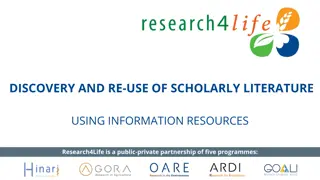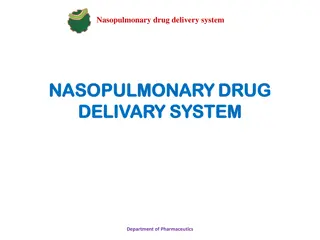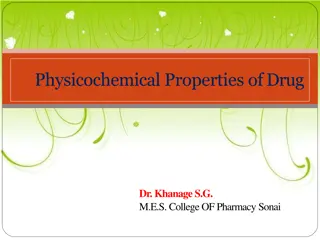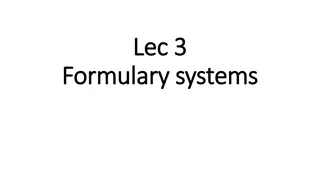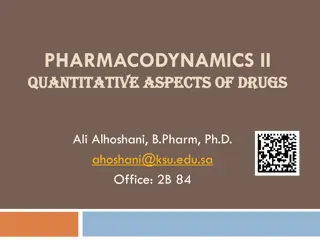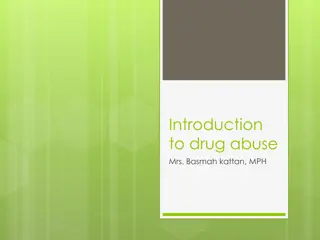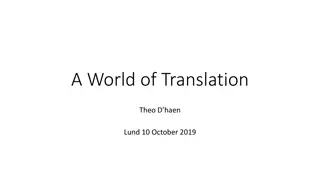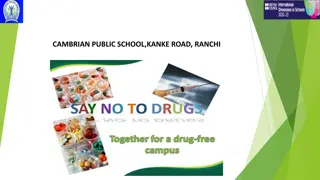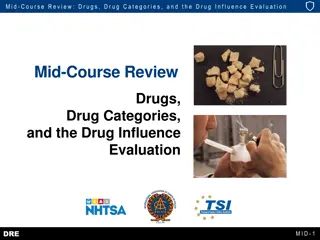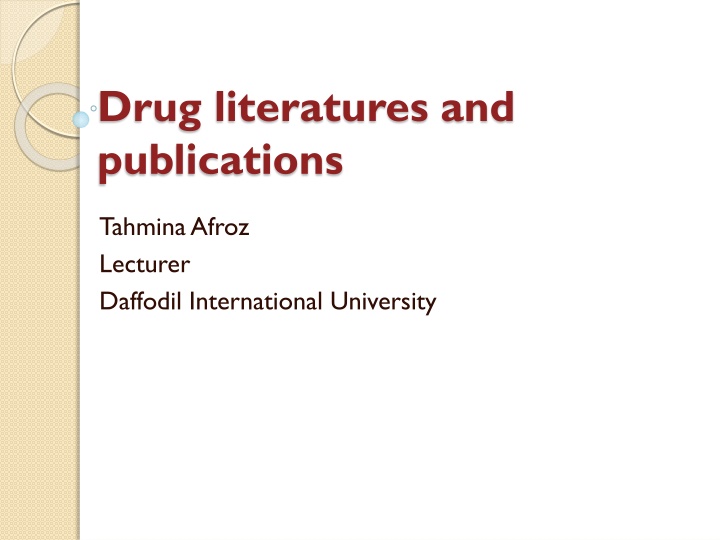
Pharmacopoeias, Formularies, and Compendia in Pharmacy Practice
Explore the significance of pharmacopoeias, formularies, and compendia in pharmacy practice, detailing their roles in drug standardization, formulation, and prescribing. Learn about national formularies and the distinction between official and non-official compendia. Enhance your understanding of monographs and their importance in pharmaceutical literature.
Download Presentation

Please find below an Image/Link to download the presentation.
The content on the website is provided AS IS for your information and personal use only. It may not be sold, licensed, or shared on other websites without obtaining consent from the author. If you encounter any issues during the download, it is possible that the publisher has removed the file from their server.
You are allowed to download the files provided on this website for personal or commercial use, subject to the condition that they are used lawfully. All files are the property of their respective owners.
The content on the website is provided AS IS for your information and personal use only. It may not be sold, licensed, or shared on other websites without obtaining consent from the author.
E N D
Presentation Transcript
Drug literatures and publications TahminaAfroz Lecturer Daffodil International University
Pharmacopoeia Pharmacopoeia is an official publication, which lists various drugs and therapeutic agents of current use with their monographs and specifies tests and standards for them . Many countries publish their own pharmacopeias listing all the drugs and therapeutic agents used in the country. Exp: British Pharmacopoeia(BP) The United States Pharmacopoeia(USP) African Pharmacopeia(AP) International pharmacopeia(IP) European pharmacopeia(EP)
Pharmacopoeia It is a book containing directions for the identification of medicines, and published by the authority of a government or a medical or pharmaceutical society. In a broader sense, it is a reference book for pharmaceutical drug specifications. pharmacopoeias and formularies provide an historical record of pharmacy practice, drug use, and drug availability.
Formularies Formulary is a publication ,which contains a list of patent medicines with their ingredients and brief notes on their pharmacological properties and therapeutics uses. A committee of physicians, nurse, and pharmacists maintain the formulary. Basically it is a document of publication published by legal authority of a country which includes all the current productable and prescriptive constituent,composition,dosage and administration. medicine with their
National Formularies A national formulary contains a list of medicines that are approved for prescription throughout the country, indicating which products are interchangeable. It includes key information on the composition, description, selection, prescribing, dispensing and administration of medicines. Many countries , including Bangladesh published their own Formularies. Examples of national formularies are: Bangladesh National Formulary Australian Pharmaceutical Formulary British National Formulary British National Formulary for Children Indian Pharmacopoeia Commission Sri Lankan Formulary
Compendia Pharmacopoeias and formularies are collectively known as compendia or drug compendia. Compendia may be two types: Official compendia : these are the books which contain list of drugs and other related substances with their legal standard of purity , quality and strength approved by the government. Ex: BP, USP, BDNF , JP etc. Non-officials compendia: These are the books which contain the same type of information as that of official compendia but are not recognized as official book by the government. Ex: Merck Index , Remington s pharmaceutical sciences, etc.
Monographs The descriptive material pertaining to any drug , therapeutic agent or preparation included in the Pharmacopoeia is known as the monograph. The monograph of a crude drug generally includes the following information on the drugs- Official title, definition, synonym, description, special conditions of collection, identity tests, tests for adulterants, method of assay, storage requirement, amounts of foreign organic matters, uses , dosages.
Codex A codex is a complementary volume of the pharmacopoeia The British Pharmaceutical Codex (BPC) was first published in 1907, to supplement the British Pharmacopeia which although extensive, did not cover all the medicinal items that a pharmacist might require in daily work. Materia Medica The term Materia Medica literally means materials of medicine and refers to medicinal substances and product derived from natural sources.
Official, Un-official, Non-official Drug Official drug: Drugs that have been included in the official pharmacopeia or in the national formulary or other standards book of medicine such as BP,USP etc are said to be official drug. Official drugs are designed by the drug laws. Bangladeshi drugs are usually prepared according to USP and BP standard. Ex: Paracetamol, Penicillin , Histamine.
Official , Un-official , Non-official Drug Un-official drug: Drugs that have been included in the previous pharmacopeias or NF but the current issues have omitted are said to be unofficial drug. Example: Veritrum used in cardiac pressure Liquid Paraffin used as laxative They are cancelled from pharmacopeia or from formulary by the drug law or the items they contain. They will never appear in the pharmacopeia or in the formulary again.
Official, Un-official, Non-official Drug Non-Official drug: Non official drugs are those drugs which have never appeared in the pharmacopoeia or in the national formulary. This type of drugs may be under research and investigation and may become official in future. Ex: steroidal alkaloid from Marsdenia tinctoria. These are locally used and such drugs contain a significant therapeutic efficacy.
Geographical Source or Habitat Indigenous plant: Indigenous plants are those plants that grow in their native land. Such as- Pinus palustris in the southern United States. Aconitum napellus in the mountain region of Europe. Naturalized plant: Naturalized plants are those plants that grow in foreign country or in a locality other than their native land. As for example Datura stramonium was indigenous to Europe and it is naturalized in Asia, The United States etc.
Geographical Source or Habitat Some of these plants may have been introduced With the seeds of cultivated plant Some by birds or ocean current By ballast of ships and so on. Cultivated : Drugs can be collected from wild plants or plants can be cultivated for the production of drugs. Cinchona, native to South America, was cultivated as a crop in Indonesia.
Geographical Source or Habitat Organized Drug: The drugs directly obtained from the following plant parts and containing cellular tissues are called organized drug. 1.Leaves 2.Flower 3.Fruit 4.Seeds 5.Herbs 6.Entire organism 7.Woods 8. Barks 9.Rhizomes 10.Roots
Geographical Source or Habitat Unorganized drug: The drugs which are prepared from plant parts by some intermediate processes such as drying, incision or extraction by a solvent and do not contain any cellular plant tissue are called unorganized drugs. Such as-(i) Aloe juice (ii) Agar (iii) tragacanth (iv)Gelatin (v)Honey (vi) bees Wax
Abbreviations BPC: British Pharmaceutical Codex USP-NF: The United States Pharmacopoeia and The National Formulary BDNF: Bangladesh National Formulary BP: British Pharmacopoeia USP: United states Pharmacopoeia BNF: British National Formulary IPC: Indian Pharmacopoeia Commission



